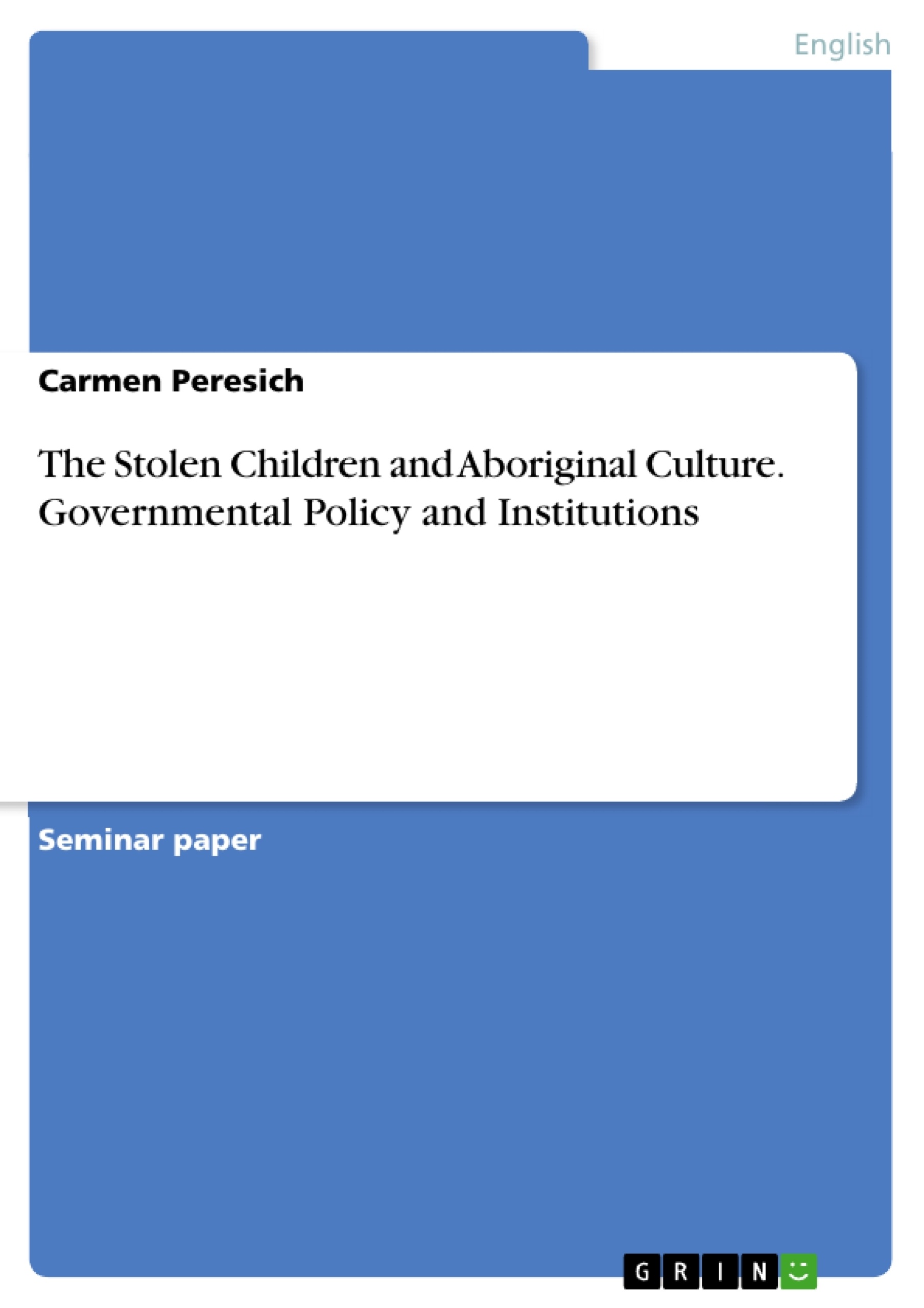The chapter of the so called "Stolen Children" is certainly one of the darkest in Australia’s history. White people determined by ethnocentric convictions attempted to assimilate Indigenous people and, therefore, destroyed countless lives. The film "Rabbit-Proof Fence" by Phillip Noyce (2002), which is well-known and often screened in classrooms, impressively depicts the fate and suffering of three of them and gave the impetus for the present paper.
The purpose of this paper is to demonstrate that the policy of removing children from their families did not accomplish any “good work” but happened with the aim of controlling and assimilating Aboriginal people.
Inhaltsverzeichnis (Table of Contents)
- Introduction
- The policy of institutionalising children
- Life in Institutions
- Effects
- Conclusion
Zielsetzung und Themenschwerpunkte (Objectives and Key Themes)
This paper aims to demonstrate that the policy of removing Aboriginal children from their families did not achieve any positive outcomes but was instead implemented to control and assimilate Aboriginal people. The paper explores the governmental policy of institutionalizing Aboriginal children, examines their lives in these institutions, and investigates the lasting effects of growing up in such environments.
- The impact of government policies on Aboriginal families and communities
- The experiences of Aboriginal children in institutional care
- The long-term consequences of the Stolen Generations on individuals and communities
- The role of assimilation policies in shaping Indigenous identity and culture
- The historical and ongoing struggle for recognition and justice for Aboriginal people
Zusammenfassung der Kapitel (Chapter Summaries)
- Introduction: This chapter sets the historical context for the Stolen Generations, highlighting the ethnocentric convictions that drove the assimilation policies and the devastating consequences for Aboriginal people. It introduces the film "Rabbit-Proof Fence" as a powerful depiction of the experiences of the Stolen Generations.
- The policy of institutionalising children: This chapter examines the legal framework and rationale behind the policy of removing Aboriginal children from their families. It discusses the motivations behind the policy, including the desire to control and assimilate Aboriginal people and the belief that white society could provide a better upbringing for Aboriginal children.
- Life in Institutions: This chapter explores the harsh realities of life in institutions for Aboriginal children, focusing on the separation from families and communities, the lack of cultural connection, and the oppressive and controlling environment.
Schlüsselwörter (Keywords)
The Stolen Generations, assimilation policies, institutional care, Indigenous identity, Aboriginal culture, forced removal, genocide, human rights, social justice.
- Quote paper
- Carmen Peresich (Author), 2015, The Stolen Children and Aboriginal Culture. Governmental Policy and Institutions, Munich, GRIN Verlag, https://www.hausarbeiten.de/document/295563


